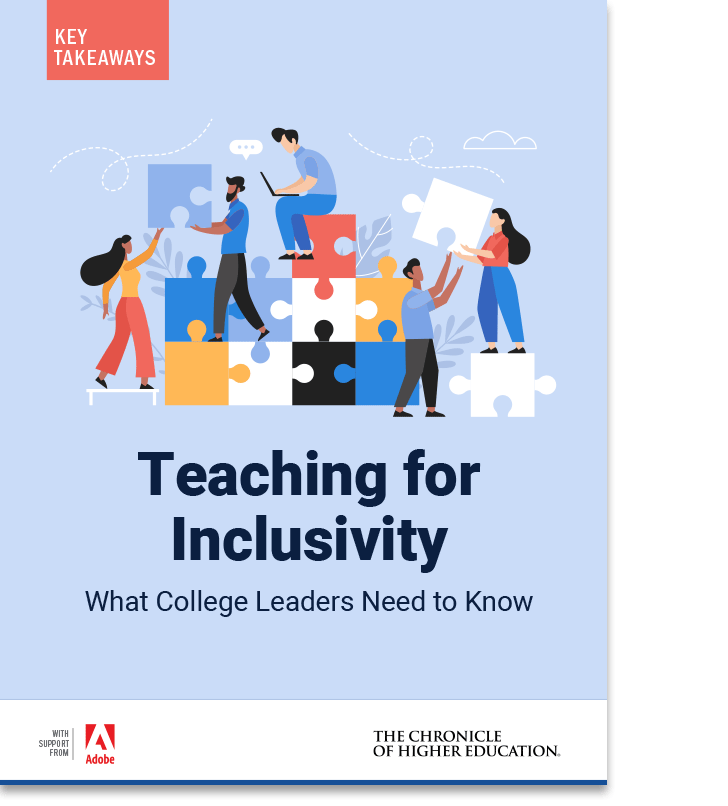

.

Student participation rates took a big hit during the pandemic, while shedding light on the importance of creating an inclusive learning environment in the classroom. While administrators, faculty leaders and directors of campus teaching-and-learning centers are dedicated to finding ways to encourage instructors to foster a climate where each student’s voice is heard, why are some faculty still hesitant to embrace this?
The Chronicle gathered four experts from the University of North Carolina at Chapel Hill, the University of Pennsylvania and Arizona State University in a recent virtual forum to discuss the role of supportive teaching methods in a student’s overall success and how they can be applied.
Download Teaching for Inclusivity to explore the key takeaways from the discussion, including:
- The critical components of sustaining a full participatory setting
- Common misconceptions about inclusive teaching practices
- The biggest barriers that prevent professors from embracing inclusive teaching techniques
.

Student participation rates took a big hit during the pandemic, while shedding light on the importance of creating an inclusive learning environment in the classroom. While administrators, faculty leaders and directors of campus teaching-and-learning centers are dedicated to finding ways to encourage instructors to foster a climate where each student’s voice is heard, why are some faculty still hesitant to embrace this?
The Chronicle gathered four experts from the University of North Carolina at Chapel Hill, the University of Pennsylvania and Arizona State University in a recent virtual forum to discuss the role of supportive teaching methods in a student’s overall success and how they can be applied.
Download Teaching for Inclusivity to explore the key takeaways from the discussion, including:
- The critical components of sustaining a full participatory setting
- Common misconceptions about inclusive teaching practices
- The biggest barriers that prevent professors from embracing inclusive teaching techniques
.
.